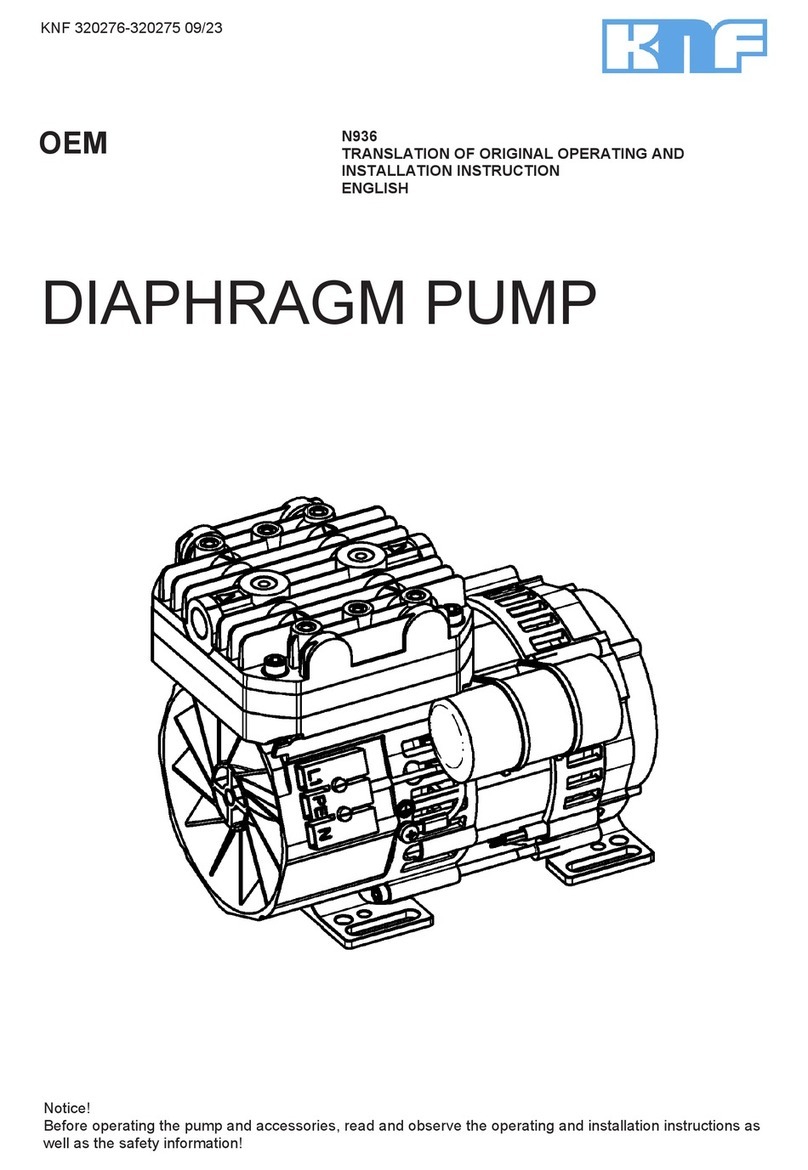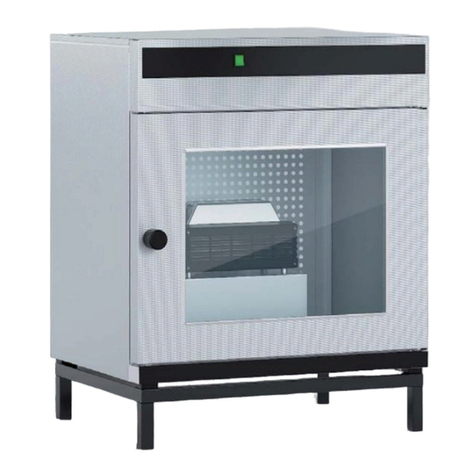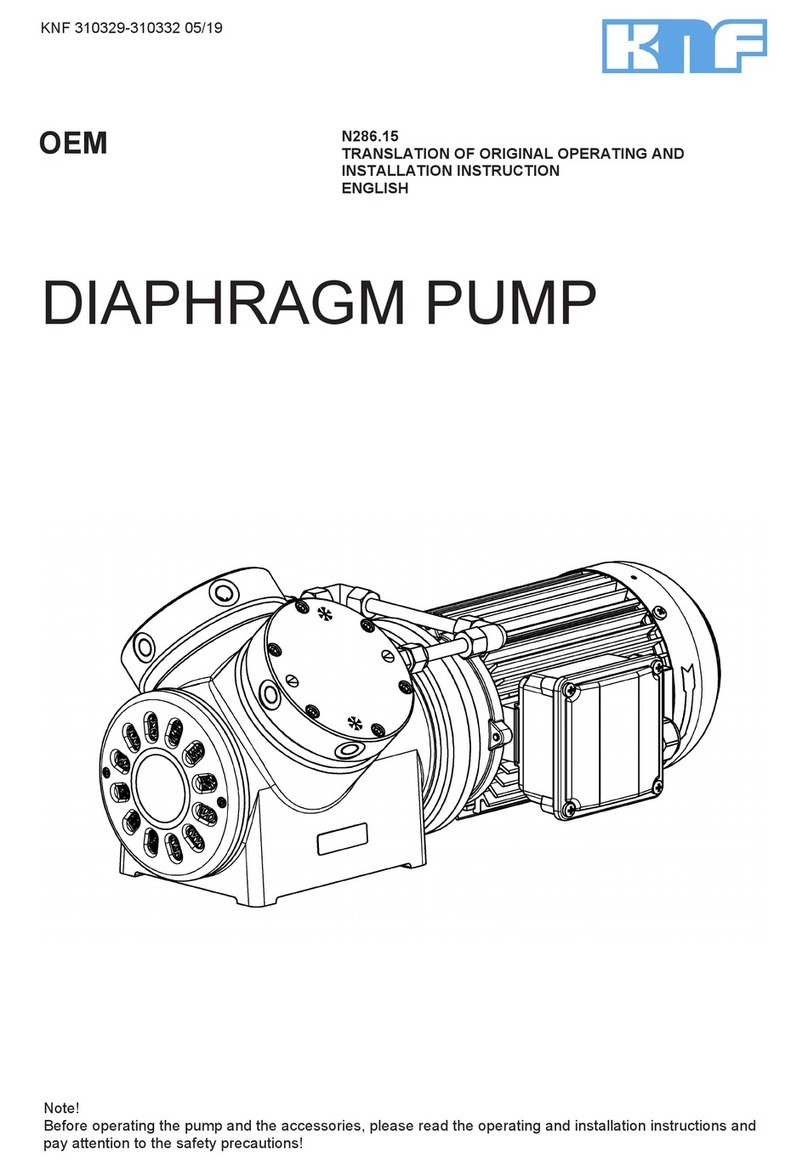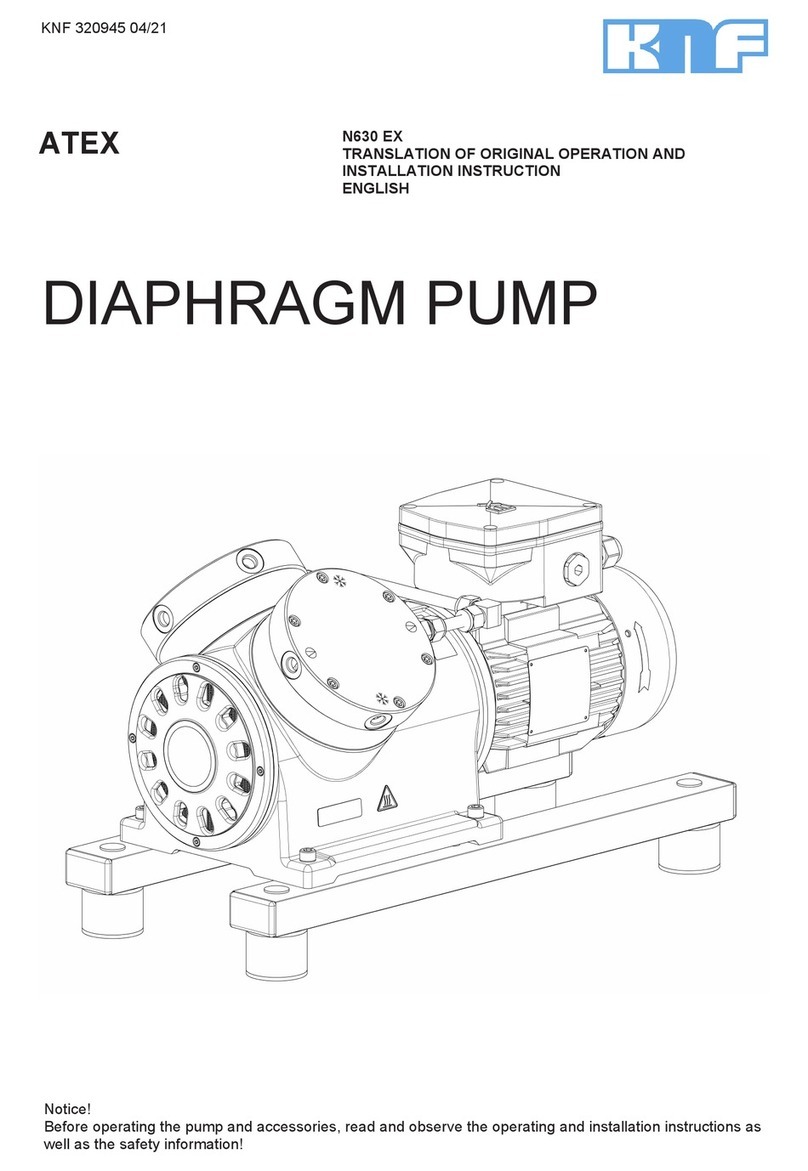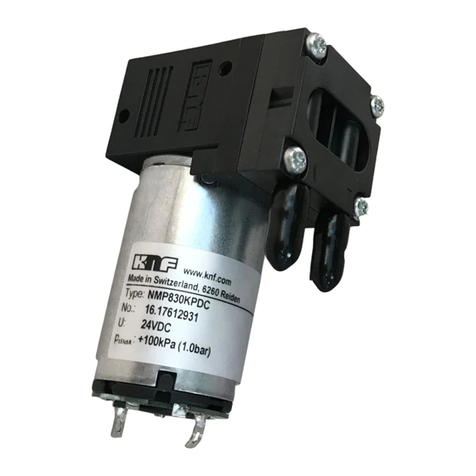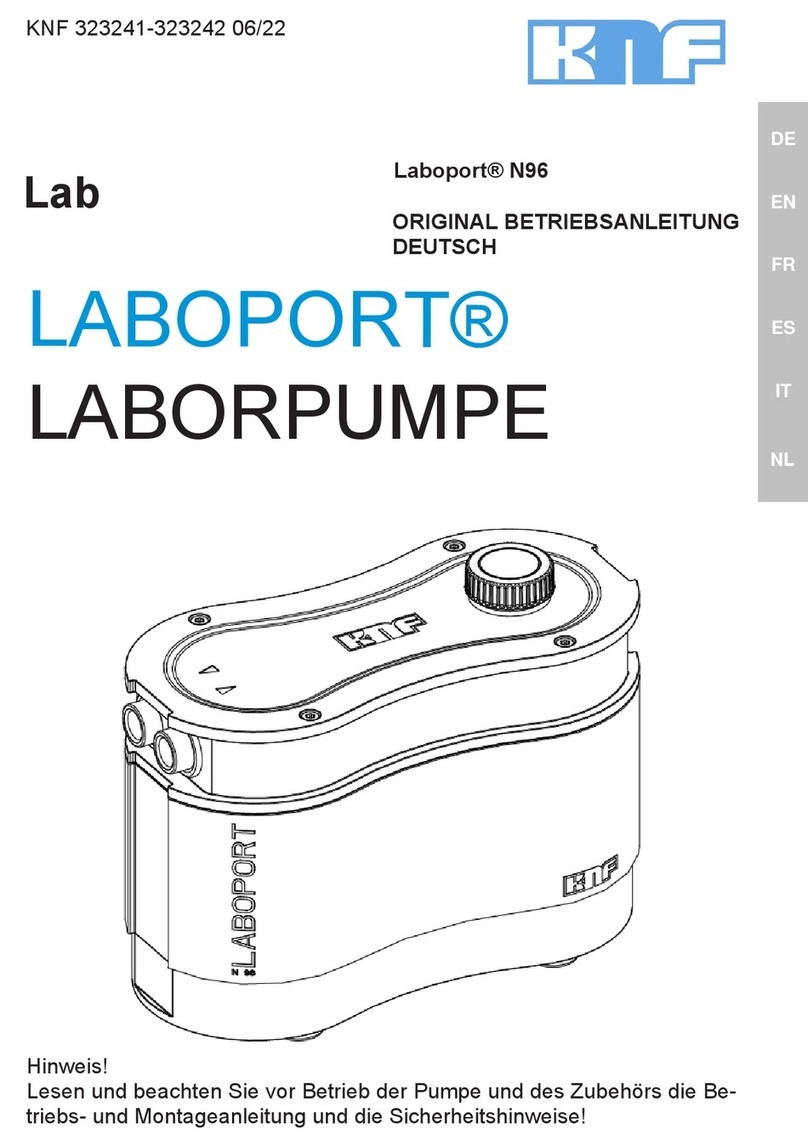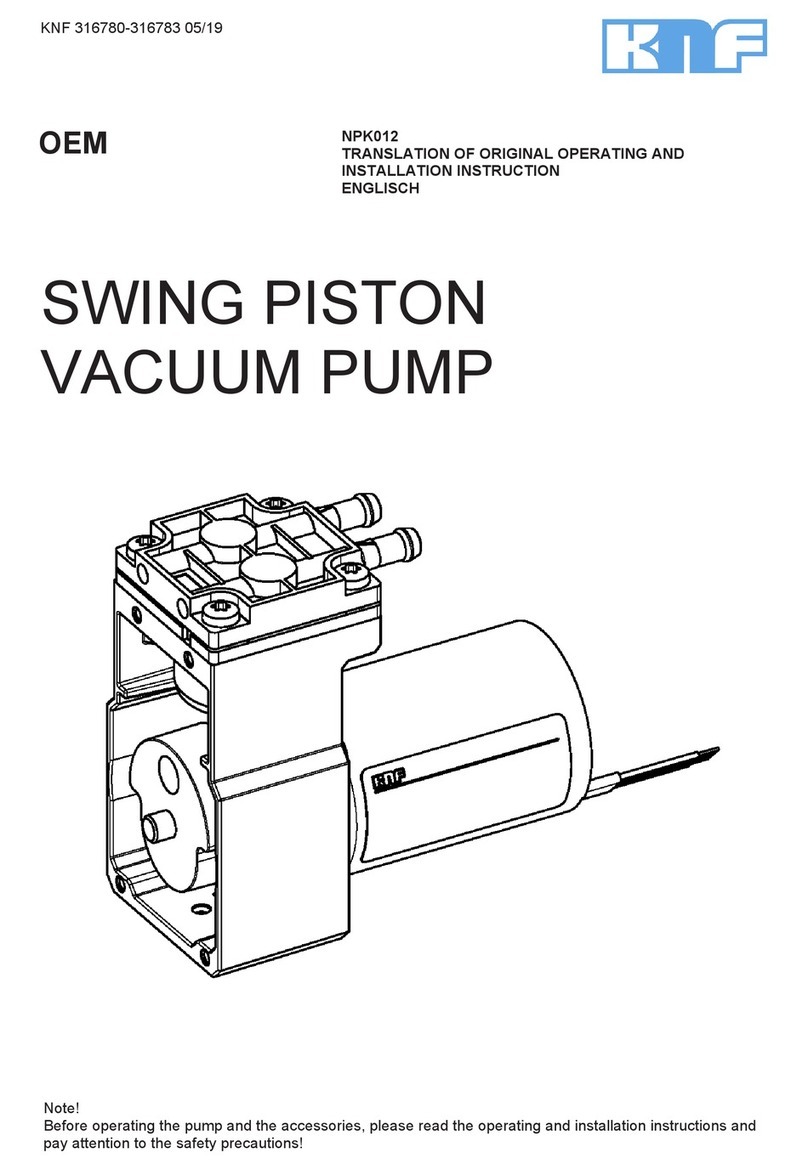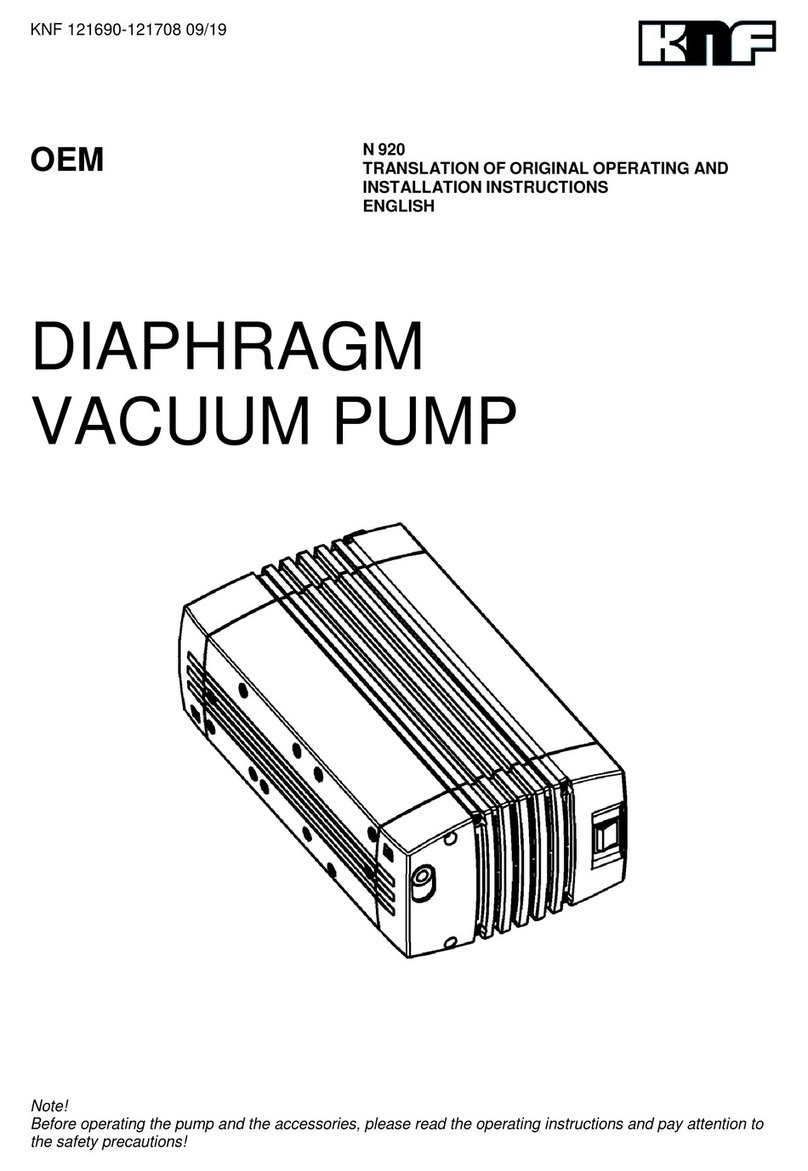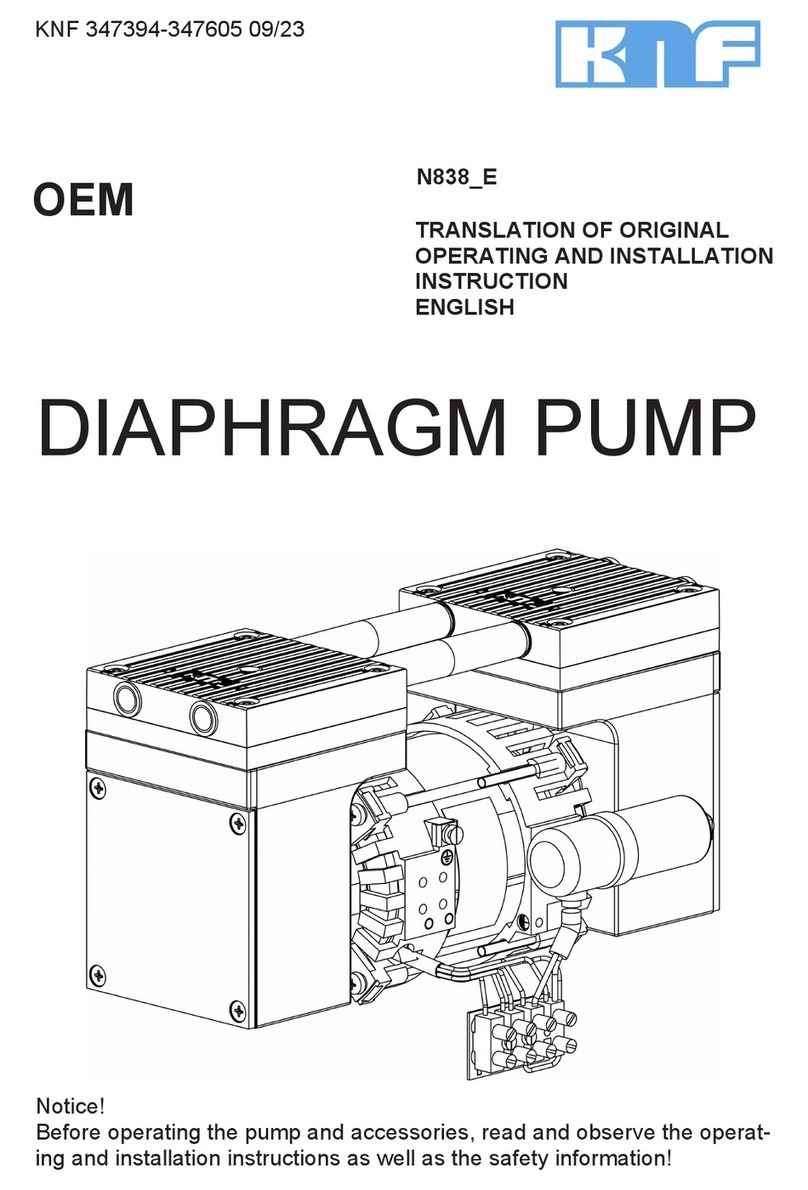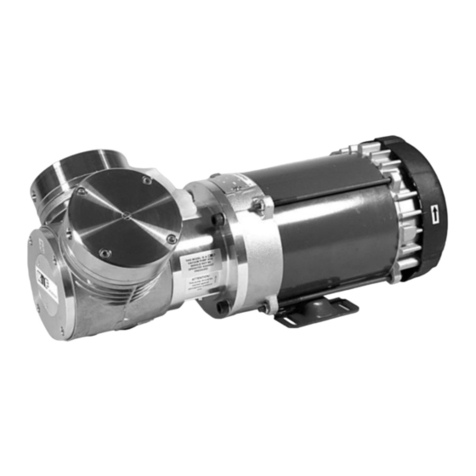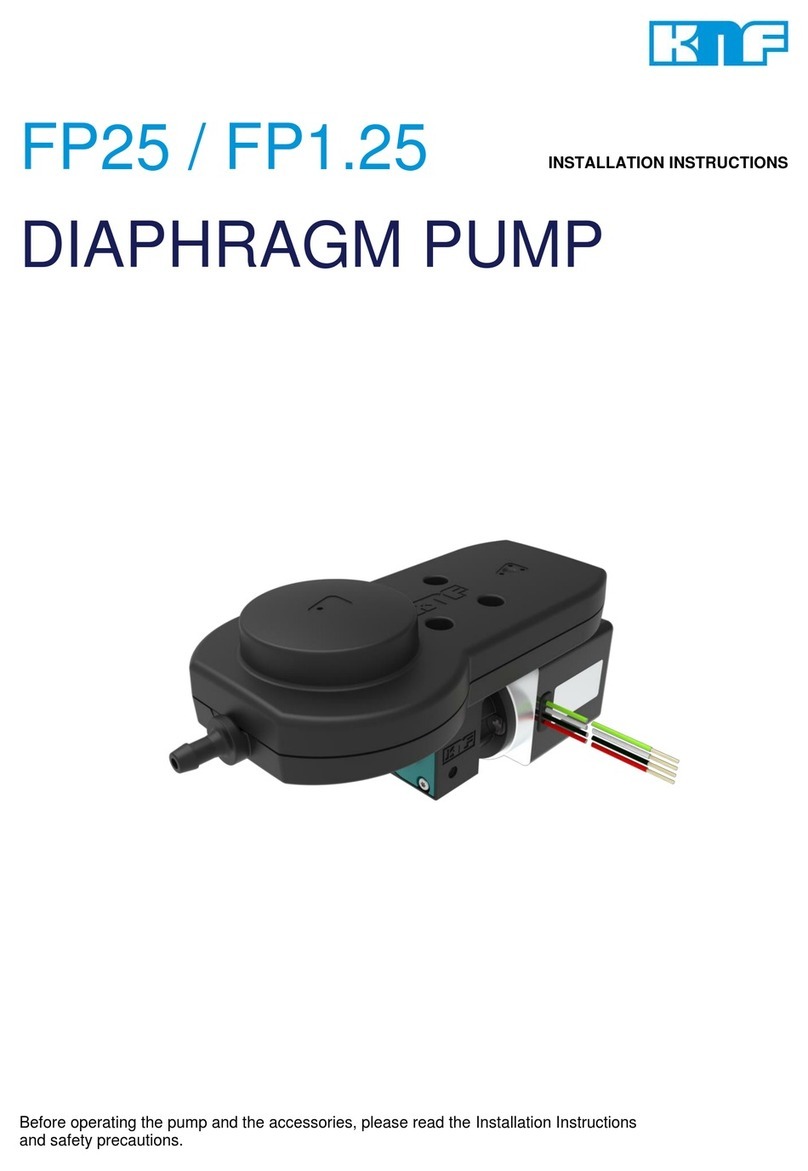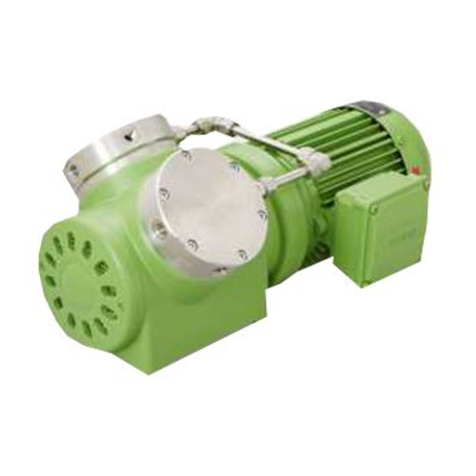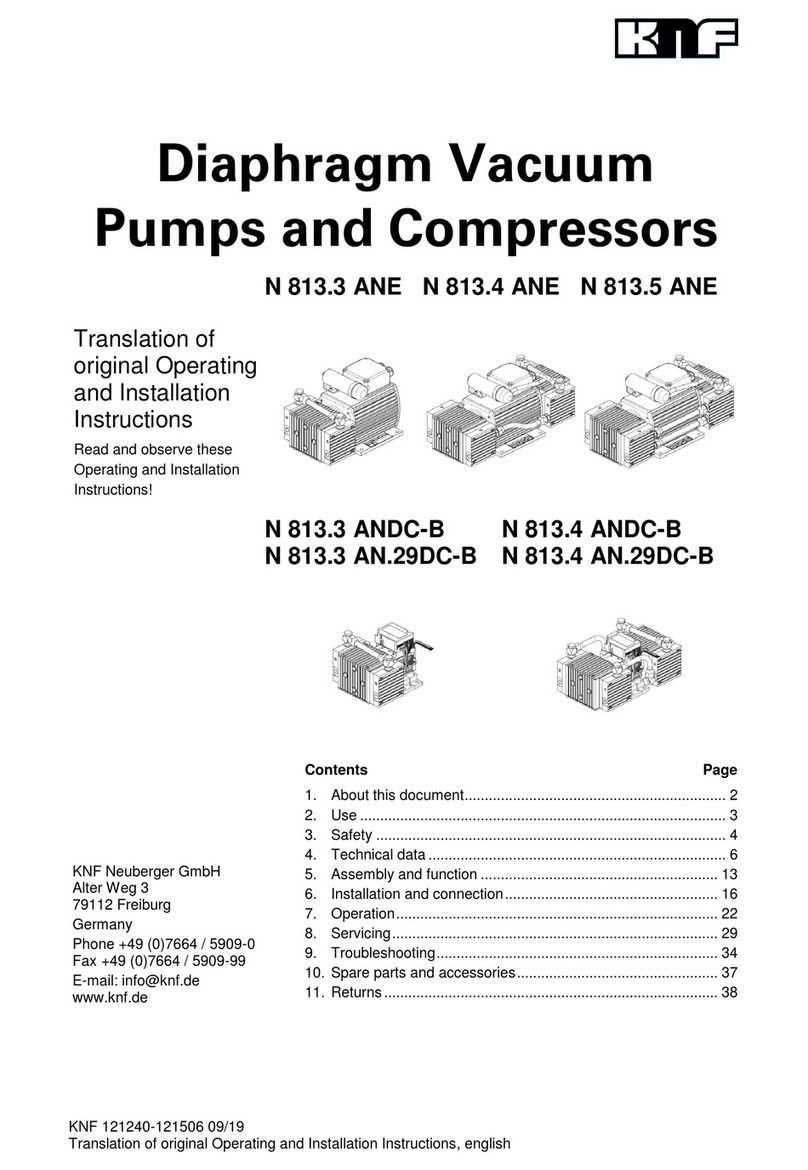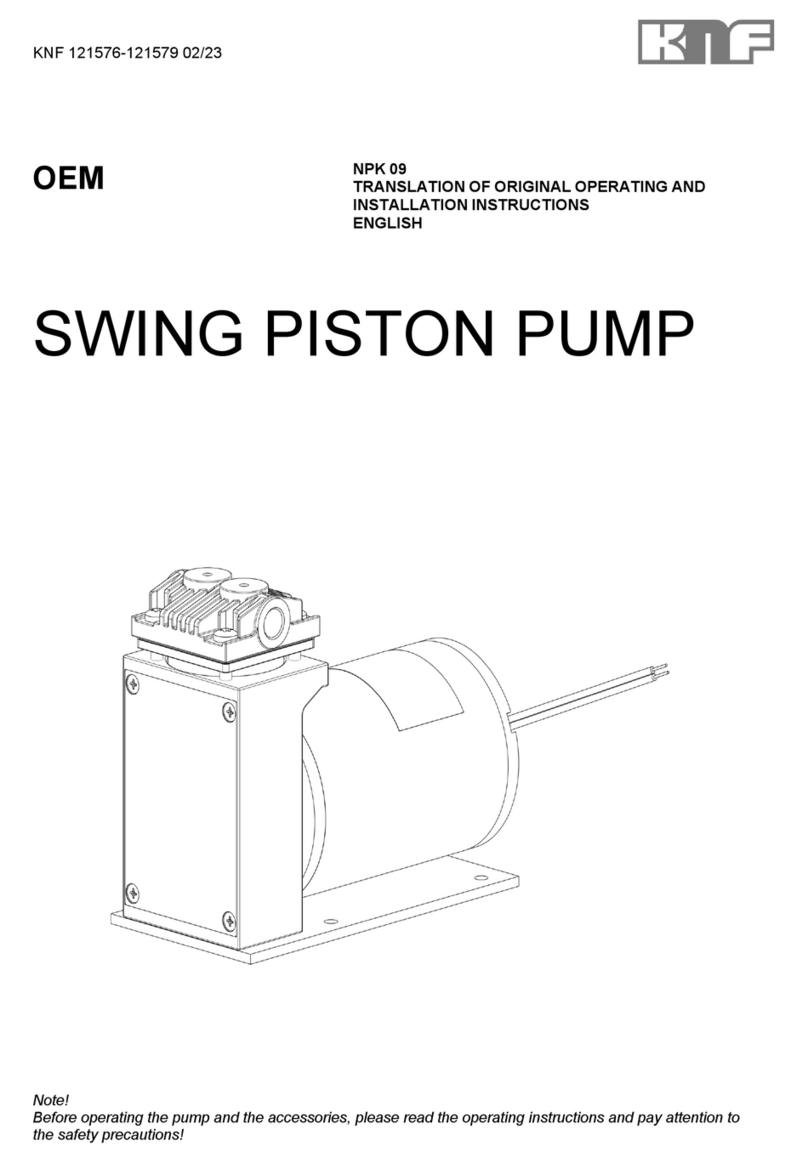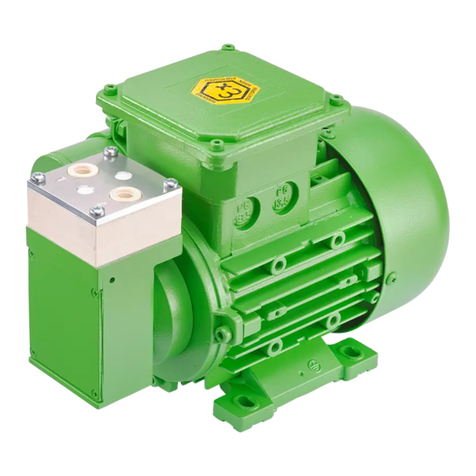
Diaphragm pump N0150 EX Use
Translation of Original Operation and Installation Instruction, english, KNF 321729 11/19 5
2 Use
2.1 Proper use
The pumps are intended exclusively for transferring gases and vapors.
Responsibility of the owner
Operating parameters and
conditions
Only install and operate the pumps in accordance with the operating pa-
rameters and conditions described in Chapter 4 Technical data and Chap-
ter 2.3 Use in potentially explosive areas.
Only pumps that are fully assembled and in the condition as delivered may
be operated.
Make sure that the installation location is dry and that the pump is pro-
tected against rain, splash, gushing and drip water as well as from other
contaminants.
The pump is suitable for transferring potentially explosive atmospheres
and for operation in potentially explosive atmospheres.
The tightness of the connections between the pipes of the application and
the pump (or the connection of the pump) is to be checked at regular inter-
vals. Leaky connections carry the risk of releasing dangerous gases and
vapors from the pump system.
Requirements for the transferred
medium
Before transferring a medium, check whether the medium can be trans-
ferred danger-free in the specific application.
Before using a medium, check the compatibility of the media-contacting
components (see 4 Technical data) with the medium.
Risk of dangerous gas mixtures during pump operation if diaphragm
breaks: Depending on the medium being transferred, breakage of the di-
aphragm can result in a dangerous mixture if the medium mixes with the
air in the compressor housing or the surroundings.
Make certain that no risk of explosion arises even in extreme operating sit-
uations (temperature, pressure) and in the event of system breakdowns.
Only transfer gases that remain stable under the pressures and tempera-
tures that arise in the pump.
Frequency converter Pumps with three-phase motor are designed for operation with frequency
converter in the speed range 500 – 1500 rpm (50 Hz) or 600 – 1800 rpm
(60 Hz) (see also Chapter Electrical connection).
2.2 Improper use
The pumps are not suitable for use below ground.
The pumps are not suitable for transferring:
§Dusts
§Liquids
§Aerosols
§Biological and microbiological substances
§Explosives
§Fibers
§Food
Pumps that can produce both vacuum as well as overpressure may not be
used to simultaneously produce vacuum and overpressure.
This function can be made possible on a project basis upon consultation
with KNF Customer Service.


















